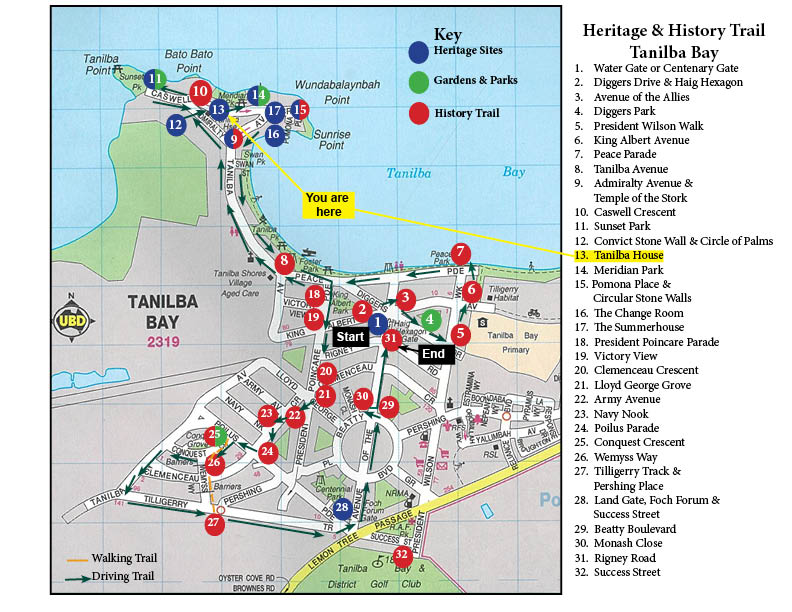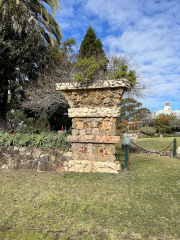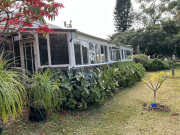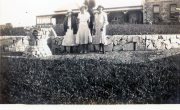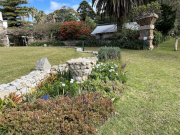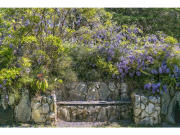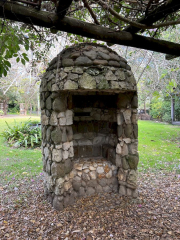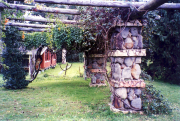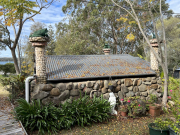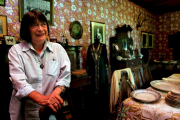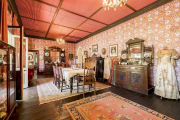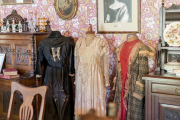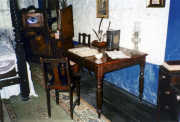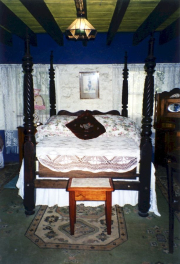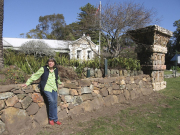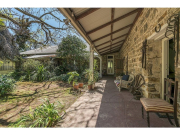Your cart is currently empty!
Tanilba house
“A Place of White Flowers”
Tanilba House
Tanilba House is a historic stone homestead built by convicts for Lieutenant William Caswell who retired from the English Navy and sought his fortune in the colony of NSW. He arrived with his young wife Susan in 1829 and took possession of a 50-acre land grant in 1831.

Oldest Original Home in Port Stephens
Tanilba House (c1831) is the oldest original home in Port Stephens. State heritage listed; she sits proudly on a peninsula surrounded by the bay on 3 acres of manicured gardens on the Tilligerry Peninsula.
What Does Tanilba Mean?
Tanilba is an indigenous word and means “Place of white flowers”, presumably due to the many flannel flowers that originally covered the peninsula.

The Caswells
Tanilba House was built by convicts for Lieutenant William Caswell who retired from the English navy and sought his fortune in the colony of NSW. Arriving with his young wife Susan in 1829, he took possession of a 50-acre land grant and an assignment of convicts who cleared and worked the land.
After a couple of successful years, he started building a large stone house of his own design. His aim was to build his wife, and 11 children, a comfortable and impressive home.


The walls of Tanilba House, measuring half a metre in thickness, served as a form of natural air conditioning during its time, effectively regulating temperatures to keep the interior cool in summer and warm in winter. Susan requested French doors across the front of the house to capture refreshing summer breezes.
Despite its initial function as a farm, Tanilba House exuded elegance, featuring spacious and well-lit rooms that offered uninterrupted views of the surrounding water.
Adding to its amenities, the house included a deep underground cellar designed to store wines. Servants’ quarters, situated at the rear of the house, were crafted with a degree of comfort, contributing to the overall functionality of Tanilba House.
The Caswell’s had 11 children, eight of which were born at the house. Two young sons died there. Tanilba House was designed to be a family home and farmstead. The half-metre-thick stone walls, extensive verandas and high ceilings are all part of its colonial charm.
Building Tanilba House
The house was built from locally quarried quartz porphyry stone and lime mortar made on the property from burning oyster shells. The remnants of the original kilns are still visible in Sunset and Meridian Parks nearby. A small stone gaol was the first item to be built and remains on the southern side of the house. Ten acres (4 hectares) on the eastern side of the hill were used as a vineyard soon after the house was built.
Gardens were established around the house, and the vineyards and orchards spread across the hill. They were growing oranges, lemons, apples, mulberries, figs and plums to name just some of the fruits noted in Caswell correspondence, and of course grapes. Olive trees and a mulberry tree are still alive today yielding fruit.
The cabinet makers were busy turning out fine furniture for the house. It was a big step up from the cramped cottage behind the garden wall they first lived in.
Heritage Listed
Tanilba House is unique for many reasons, but her position overlooking the bay is unusual for the early 1800’s when most of the focus and funds were invested in wool and food-producing country farms away from the sandy coast.
Tanilba still retains many of her original colonial features and offers scenic vistas of the surrounding bay from many parts of the property. The garden contains various heritage-listed items including arguably the oldest olive tree in Australia, a wisteria covered pergola, an ancient Bunya pine and two c170 year old fig trees.


Caswell’s Move to Balickera 1844
In addition to the land at Tanilba Bay, the Caswell’s also had 920 acres on the Williams River (near Seaham) granted to them – this became known as Balickera. Lieutenant Caswell was known to leave Tanilba at 3am each day on horseback to ride to supervise this other farm. In the early 1844, after only seven years in the “new” stone house, a devastating drought, and the cessation of convict transportation by the British government (and therefore removal of convict labour) resulted in the Caswell’s departing Tanilba. The family moved to their modest house on the Balickera farm.


Tanilba House from 1882-1920
Tanilba was leased intermittently until 1897 but was largely uninhabited. In 1882 a visitor described the house as a “deserted residence fast moulding into decay”. Lieutenant Caswell died in 1859 and Mrs Caswell in 1886 at the age of 81. It was after Mrs Caswell’s death that the home was sold to Elizabeth Holmes in 1897 who started restoring the old residence.
She originally wanted to demolish it to make way for a grand Victorian home, but her architect recommended she restore Tanilba instead. Mrs Holmes sold Tanilba House to W J Ebbeck in 1905, who converted it into a holiday house for fishing parties from Newcastle and Maitland.
Tanilba House changed hands again in 1913 and became the residence of Walter W Clift who in turn sold it in 1920 to property developer Henry F Halloran.
Tanilba House Owned by H F Halloran 1920-1931
Henry F Halloran was a real estate agent, developer and landscape architect in Sydney and other parts of NSW. He designed such structures as “The Temple”, which is behind Tanilba House and which is visible on the main road leading to the house, the stone circular driveway, a wishing chair, and other decorative stone structures on the Tanilba House property plus the elaborate gates at what were then the north and south entrances to Tanilba Bay.
The stone for all these structures was quarried locally from Mallabula. Henry Halloran envisaged a flourishing town surrounding Tanilba House. He died in 1953 and the house began to deteriorate.
Tanilba House Holiday Destination
For almost 20 years Tanilba House was used as a holiday destination before being leased to the religious group “The Gospel Fisherman” who used the property and held various camps on the grounds.
Oberland Family
Helena Oberland, the owner of the famous “Alcron” restaurant in Newcastle, took over the lease in 1960, using it as a guest house and riding school. In 1980 the state government realised its importance with help from Helen Taylor (Helena’s daughter) and placed a permanent conservation order on the property. Helen Taylor lived at Tanilba House from the mid-1980s until 2015. She staged exhibitions, plays, poetry readings and concerts in the historic home.
Current Owners
In 2017 the current owners, Glenn Short and Deirdre Hall purchased the property and have since been enthusiastically restoring the home and further enhancing the three acres of grounds. Weddings, high teas and other events are currently held regularly at the house.



